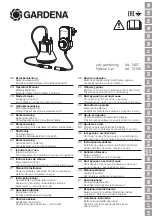
Introduction
Assembly of your signal tracer will prove to be an exciting project and give
much satisfaction and personal achievement. If you have experience in
soldering and wiring techniques, you should have no problems. For the
beginner, care must be given to identifying the proper components and
good soldering habits. Above all, take your time and follow the easy step-
by-step instructions. Remember, an ounce of prevention is worth a pound
of cure. Avoid making mistakes and no problems will occur.
Parts Verification
Before beginning the assembly process, familiarize yourself with the
components and this instruction book. Verify that all parts are present.
This is best done by checking off each item against the parts list.
Resistors are identified by their color code as shown in the assembly
instructions.
Soldering
The most important factor in assembling your signal tracer is good
soldering techniques.
Using the proper soldering iron is of prime
importance. A small pencil type iron of 25-40 watts is recommended. The
tip of the iron should be the flipplet point type and at all times kept clean
and well tinned. Many areas on the main board are close together and
care must be given not to form solder shorts. Size and care of the tip will
eliminate problems.
For a good soldering job, the areas being soldered must be heated
sufficiently so that the solder flows freely. Apply the solder simultaneously
to the component lead and the component pad on the PC board so that
good solder flow will occur. Be sure that the lead extends through the
solder smoothly, indicating a good solder joint. Use only rosin core solder
of 60/40 alloy. Do not blob the solder over the lead because this could
result in a cold solder joint.
Assemble Components
In all of the following assembly steps, the components must be installed
on the top side of the board unless otherwise indicated. The top legend
shows where each component goes.
The leads pass through the
corresponding holes and the board is turned to solder the component
leads on the foil side. Solder immediately, unless the pad is adjacent to
another hole, which will interfere with the placement of the other
component. Clip excessive leads with diagonal cutters. Then, place a
check mark in the box next to the step indicating that the step is complete.
-2-






























